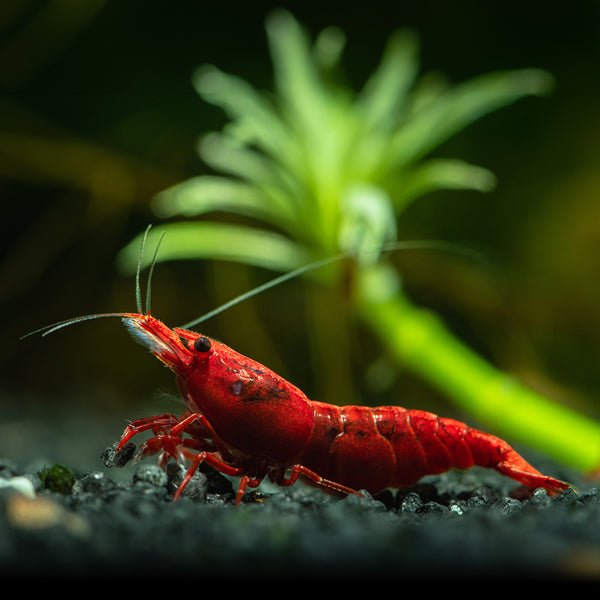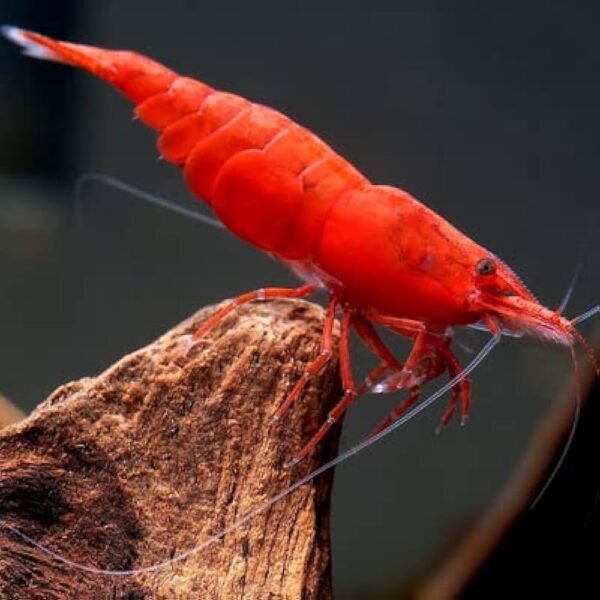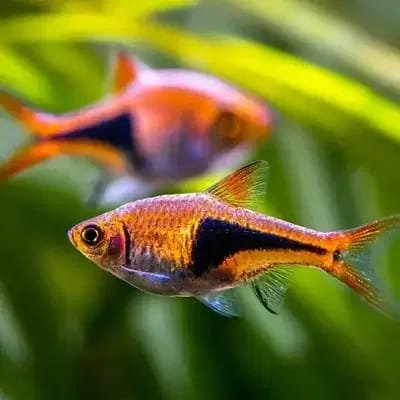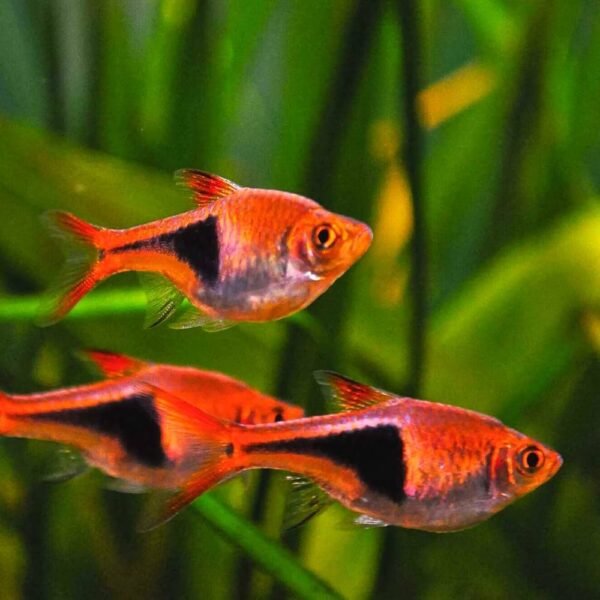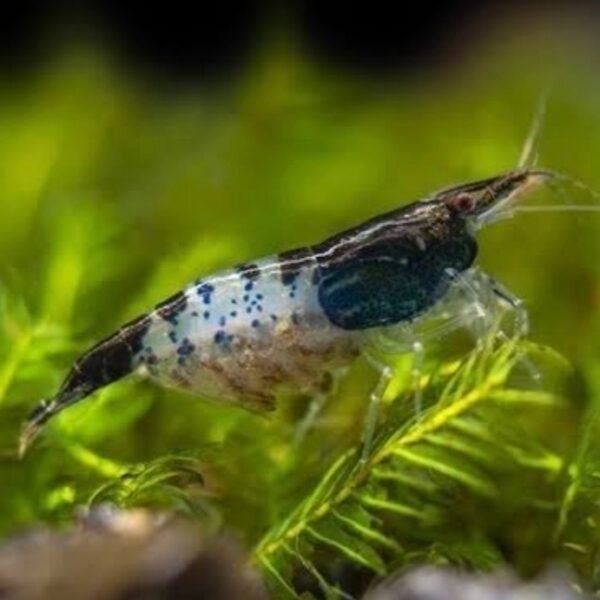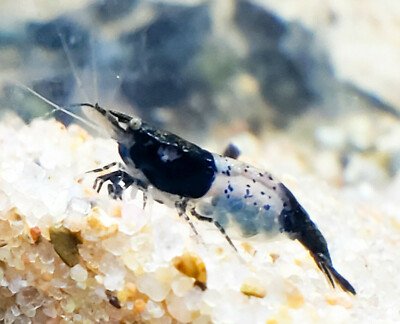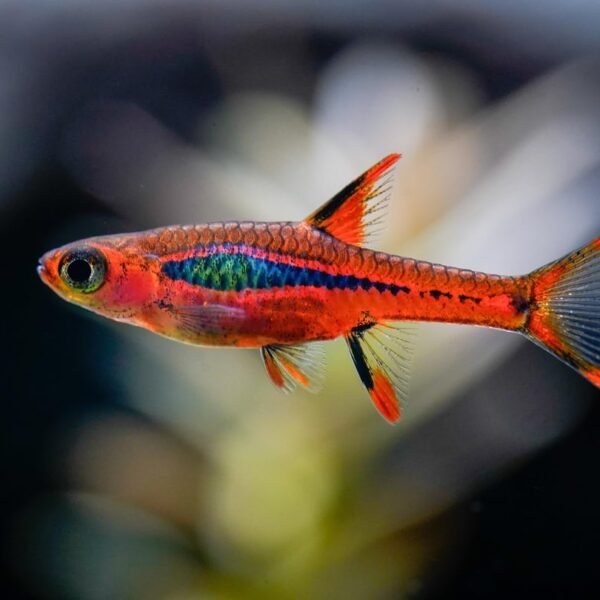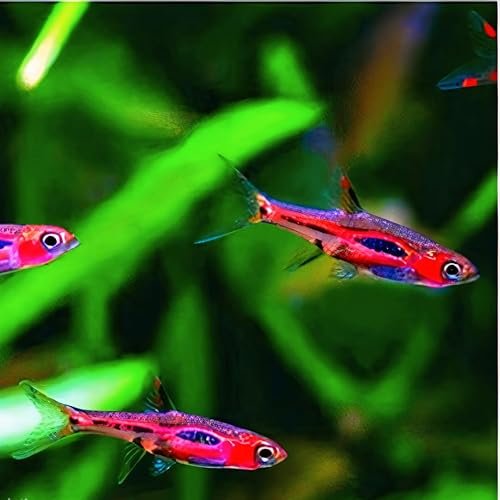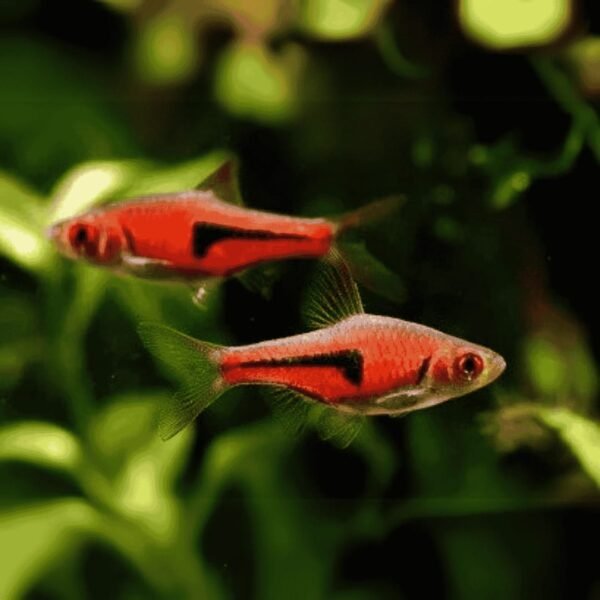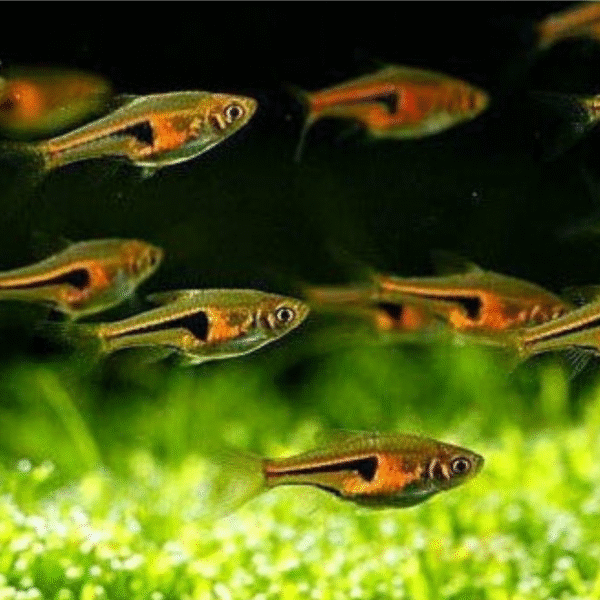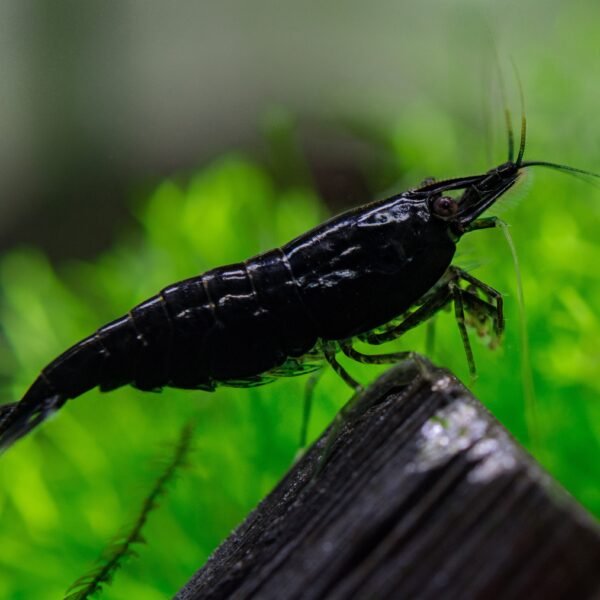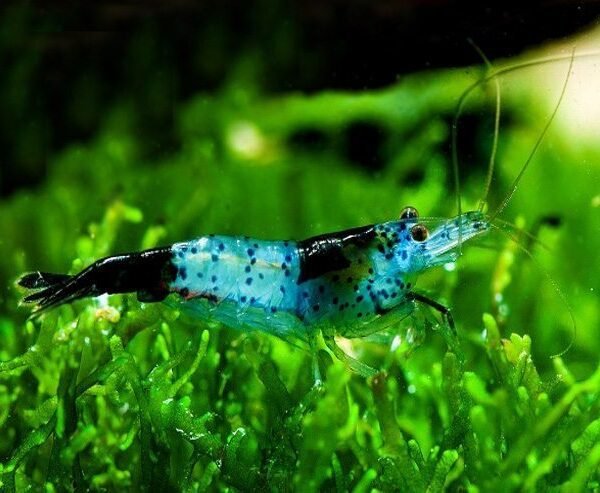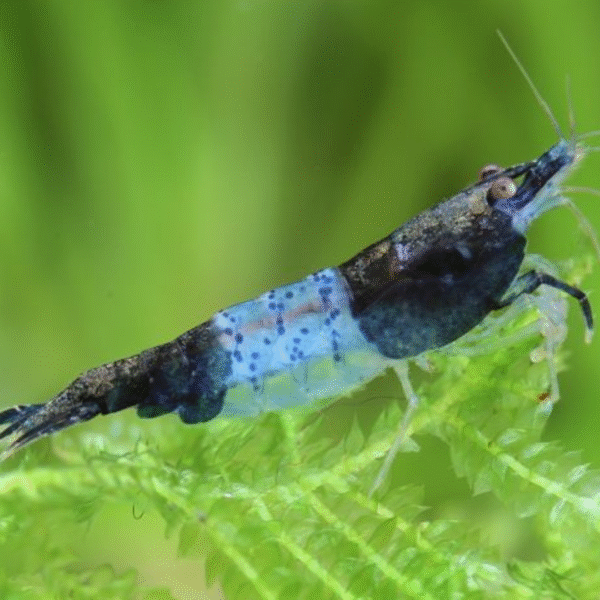Description
Peacock Eel (Macrognathus siamensis)
📌 Basic Info
-
Scientific Name: Macrognathus siamensis
-
Common Names: Peacock Eel, Spot-Finned Spiny Eel, Siamese Spiny Eel
-
Family: Mastacembelidae (Spiny Eels)
-
Origin: Southeast Asia (Thailand, Laos, Cambodia, Vietnam)
-
Size: 8 – 12 inches (20 – 30 cm)
-
Lifespan: 8 – 12 years in captivity
-
Tank Zone: Bottom dwellers; often burrow in substrate
🌊 Water Parameters
-
TDS: 120 – 250 ppm
-
pH: 6.0 – 7.5
-
Temperature: 24 – 28°C (75 – 82°F)
-
Hardness: 5 – 15 dGH
🐟 Characteristics
-
Slender, elongated eel-like body with yellowish-brown base color.
-
Distinct eye-like peacock spots near the tail fin and along the dorsal fin.
-
Shy and nocturnal by nature, spending much time burrowed in sand.
-
Peaceful and generally non-aggressive, though may eat very small fish.
-
Possess sharp spines near the dorsal area – handle with care.
🍽️ Food
-
Type: Carnivorous.
-
Diet: Live/frozen foods – bloodworms, tubifex, blackworms, small shrimp, chopped earthworms. Rarely accept flakes or pellets unless trained.
-
Feeding Schedule: Once daily in the evening (they are more active at night).
🛠️ Tank Setup & Maintenance
-
Tank Size: Minimum 30 gallons for a single specimen; larger for groups.
-
Substrate: Fine sand or smooth gravel (they burrow and can injure themselves on sharp substrates).
-
Decor: Caves, driftwood, PVC pipes, and dense plants for hiding.
-
Lighting: Dim lighting preferred; floating plants help.
-
Filtration: Gentle to moderate flow, well-oxygenated water.
-
Water Change: 25–30% weekly; sensitive to poor water quality.
-
Lid: Tight-fitting lid required – expert escape artists.
👥 Social Behavior
-
Peaceful with most tank mates.
-
Best kept with medium-sized, calm fish (Gouramis, Barbs, Rainbowfish, Corydoras, Loaches).
-
Avoid housing with aggressive cichlids or very small fish (like Neon Tetras) which may be eaten.
-
Can be kept singly or in small groups if enough hiding spots are provided.
✅ Do’s
-
Provide soft sand for burrowing.
-
Keep a secure lid to prevent escapes.
-
Feed a protein-rich diet for good health.
❌ Don’ts
-
Don’t keep with very aggressive tank mates.
-
Don’t use sharp gravel or rough decorations.
-
Don’t rely on dry foods alone – they often refuse flakes/pellets.
⭐ Quick Tips
-
Fascinating, unusual aquarium fish that adds personality and activity at night.
-
Hardy but requires special care due to its burrowing habits.
-
Best for intermediate aquarists who can provide the right setup.



